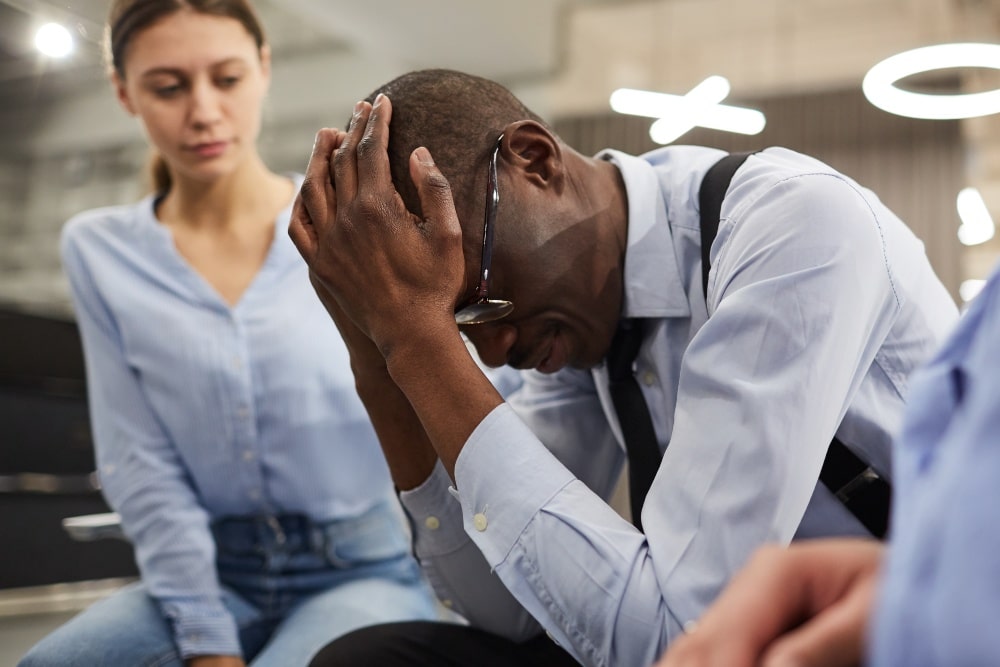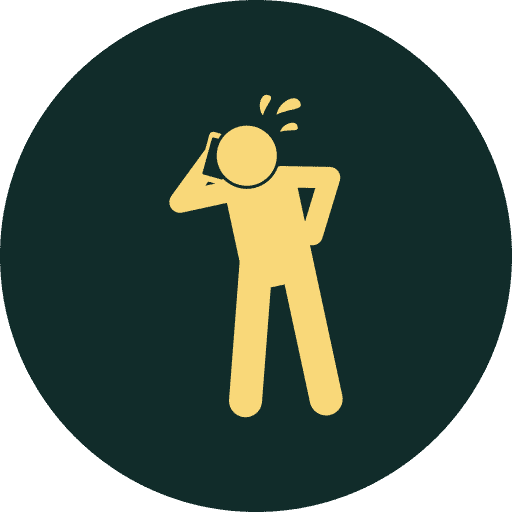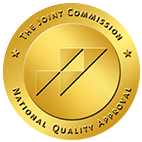
Individuals who notice a decrease in interest in things they once enjoyed or experienced pleasure could be struggling with anhedonia. Anhedonia can not only cause this interest loss but can also affect their quality of life.




Anhedonia describes a reduced ability to feel pleasure and a decreased interest in activities a person once enjoyed. It’s a key symptom of major depressive disorder. However, it’s also sometimes a symptom of other behavioral health conditions.
Not all individuals who experience anhedonia have a diagnosed behavioral health condition. Those who struggle with anhedonia lose interest in the experiences, hobbies, or activities they once loved.
According to the American Psychological Association, anhedonia is often associated with depressive disorder. However, it is also often tied to other behavioral health conditions. These behavioral health conditions include schizophrenia.¹
Anhedonia is also frequently seen among individuals who have experienced trauma, as well as in those with²:
It’s also associated with chronic health conditions such as coronary artery disease, diabetes, and Parkinson’s disease.³
Anhedonia is often divided into two types: physical and social.

Physical Anhedonia: This describes an individual’s inability to experience pleasure from physical things where they usually would feel joy. This includes engaging in sexual interactions, touching a loved one, and eating.

Anhedonia symptoms depend on the type. For instance, social anhedonia symptoms may include:
Physical anhedonia symptoms may include:
An individual with anhedonia may not maintain social connections. They may skip significant life events when they are struggling. They may have a loss of social relations or have strained relationships.
Treating anhedonia can be a challenge. Treatment begins with tools that help individuals manage the behavioral health concern that is most likely the cause of their symptoms. For many people experiencing anhedonia symptoms, their main behavioral health concern is usually depression.
The initial step of anhedonia treatment is to seek the help of a doctor. A person’s primary care doctor will try and rule out any medical cause of their symptoms first. If they can’t find any medical problems, they’ll likely refer the individual to a behavioral health professional. A behavioral health professional can help decide on the right line of treatment.
Some treatment options that can help with anhedonia may include:

Treatment for anhedonia may include prescription medication like antidepressants (or another class of drugs) and talk therapy. If medication is prescribed, the individual needs to take it as directed. They should also let their doctor know of any side effects they’re experiencing. If they are experiencing any side effects, they may need to have the dose of the medication adjusted.
Medications affect individuals in different ways. One medication or therapy may work for one person to minimize their symptoms. However, the same treatment may not work for another experiencing the same symptoms.

ECT is another form of treatment that may help with anhedonia. It is a highly effective treatment for severe depression, in which anhedonia can be a symptom.⁴ Some experts feel that healthcare professionals should use ECT sooner than later, particularly with individuals struggling with uncomplicated depression.⁵
With ECT, a healthcare professional places electrodes on an individual’s head. An electric current is then applied while the individual undergoes the procedure while under general anesthesia. It produces minor seizures in the brain.

TMS stimulates nerve cells using a magnetic field. A smaller electric current than what is used with ECT is used with TMS. The current used for TMS doesn’t require the individual to be under general anesthesia. TMS effectively treats major depression in individuals who struggle with depression that is not responding to medicine.⁶

Another treatment option is VNS. The healthcare provider implants a medical device in the individual’s chest. It’s similar to a pacemaker.
The device’s wires create electrical impulses that work to stimulate the brain. Like TMS and ECT, VNS also helps treat depression in individuals with treatment-resistant depression.⁷

Psychotherapy helps educate individuals about depression and provides insight into their emotions. It helps them become more aware of their feelings while pinpointing some of their triggers for depression.
Some types of psychotherapy that have been found helpful in treating depression and anhedonia include:

When trying to manage any psychological condition, individuals must treat their body, mind, and spirit. Therapy that promotes out-of-the-box thinking and creativity can be effective in helping patients feel better. Alternative and holistic therapies are offered in many depression treatment centers.
One type of alternative therapy is known as adventure therapy (i.e. surf, wolf-assisted, or equine treatment). This type of therapy puts the individual in touch with nature. It can be very “grounding” for a person being outdoors and help them feel connected more with the universe.
When individuals can work through physical challenges, it helps to teach them how to solve their problems by accessing their resourcefulness. It can help individuals feel more confident in combatting the challenges in their life. While also handling their depression triggers and anhedonia symptoms.
The right behavioral health professional can help people set healthy boundaries. Patients can access tools that will help them manage day-to-day stress. While also handling the challenges of life positively. They can help them with their anhedonia symptoms and provide a treatment plan tailored for their specific needs.
It’s important for individuals struggling with anhedonia to understand. While anhedonia treatment can be very beneficial and effective, it won’t improve a person’s behavioral health overnight.
Finding the right method that works the best for them takes time. They may need to experiment with different treatments before finding the best one. This is why working with a professional is essential.
By receiving help, individuals will be provided with several approaches to healing and coping skills. They can experiment with different techniques to see which one works best for their situation.
Examples of what individuals may experience with anhedonia include:
These are only some examples of anhedonia and what people may experience with it. While it’s a symptom of a serious behavioral health disorder, individuals shouldn’t try to self-diagnose themselves. If a person suspects they may be struggling with anhedonia, they’ll want to talk with their behavioral health professional or doctor.
Like with any evaluation of any type of emotional response, it’s not typically a simple story. The circuitry of the brain is convoluted, dense, and incredibly busy.
Anhedonia isn’t just a decreased appreciation of something, like the taste of chocolate, for instance. It’s where the underlying reward mechanisms are damaged or impaired.
This may involve changes in levels of:
These are all complex by themselves, and there are overlapping but different neural circuits that each is processed with.⁸
There’s evidence that people who struggle with anhedonia can experience and feel pleasure similar to how other people do.⁹
However, something is missing when it concerns:
The reward process becomes unhinged for individuals with anhedonia. Identifying the part of this process that’s become unhinged is a hard job. Motivation, pleasure, and desire people get from different things are fluid.
For many years, the nucleus accumbens (part of the brain’s basal ganglia) has been called the “pleasure center.” It’s implicated in anhedonia, not surprisingly. Research has shown that other areas of the brain are also involved. These areas include¹⁰:
The prefrontal cortex seems essential in high-level reward processing, including decision-making, analysis, and cost-benefit. Its ventral striatum connections seem to be especially essential in motivation, which makes it particularly important in anhedonia.
Researchers have also investigated neurotransmitter imbalances concerning anhedonia. Of particular interest is dopamine due to its reward pathway involvement. Decreased dopamine expression in depressed individuals was found to correspond well with the severity of anhedonia but not depressive symptoms overall.¹¹
The relationship between dopamine and anhedonia and reward is a complicated one. Decreased levels of dopamine in different areas of the brain can cause other effects. Therefore, dopamine is unlikely to tell the whole story.
An inhibitory neurotransmitter, Gamma-aminobutyric acid (GABA), serotonin, opioids, and glutamate (an excitatory neurotransmitter) all have the roles they play. For example, individuals with depression who are also dealing with pronounced anhedonia, tend to have decreased levels of GABA. And, depressed individuals with decreased opioid activity seem to experience less pleasure while having positive interactions.¹²
If a person is experiencing symptoms of anhedonia, their first step should be to see their primary care healthcare provider. Having any medical conditions ruled out that may be causing their inability to experience pleasure is essential.
Their doctor will likely:
If they’re okay physically, the doctor will likely refer them to a behavioral health professional.
The individual will probably require treatment if a licensed behavioral health professional provides an anhedonia diagnosis. They may need treatment for the behavioral health problem that’s causing their anhedonic symptoms so they can start experiencing relief. If a patient has depression causing anhedonia symptoms, the behavioral health professional will treat the depression. This is because depression would be the underlying condition that is causing the anhedonia symptoms.
1. American Psychological Association. APA Dictionary of Psychology. Retrieved on July 19, 2022 from https://dictionary.apa.org/anhedonia
2. JAMA Network. Assessment of Anhedonia in Adults With and Without Mental Illness: A Systematic Review and Meta-analysis. Martin Trøstheim, MS1,2; Marie Eikemo, PhD1; Remy Meir, BS3; et alIngelin Hansen, BS2; Elisabeth Paul, MS4; Sara Liane Kroll, PhD4; Eric L. Garland, PhD5,6; Siri Leknes, PhD1,2. JAMA Netw Open. 2020;3(8):e2013233. doi:10.1001/jamanetworkopen.2020.13233 https://jamanetwork.com/journals/jamanetworkopen/fullarticle/2769239
3. National Library of Medicine. Anhedonia: A Concept Analysis. Arch Psychiatr Nurs. Author manuscript; available in PMC 2014 Jun 1. Published in final edited form as: Arch Psychiatr Nurs. 2013 Jun; 27(3): 121–129. Published online 2013 Apr 24. doi: 10.1016/j.apnu.2013.02.001 https://www.ncbi.nlm.nih.gov/pmc/articles/PMC3664836/
4. National Alliance on Mental Illness (NAMI). ECT, TMS and Other Brain Stimulation Therapies. Retrieved on July 19, 2022 from https://www.nami.org/About-Mental-Illness/Treatments/ECT-TMS-and-Other-Brain-Stimulation-Therapies
5. National Library of Medicine (PubMed.gov). Cost-effectiveness of Electroconvulsive Therapy vs Pharmacotherapy/Psychotherapy for Treatment-Resistant Depression in the United States. Eric L Ross 1, Kara Zivin 1 2 3 4, Daniel F Maixner 1. JAMA Psychiatry . 2018 Jul 1;75(7):713-722. doi: 10.1001/jamapsychiatry.2018.0768. https://pubmed.ncbi.nlm.nih.gov/29800956/
6. National Library of Medicine (PubMed Central). Use of Transcranial Magnetic Stimulation for Depression. Sukaina Rizvicorresponding author1 and Ali M Khan2. Cureus. 2019 May; 11(5): e4736. Published online 2019 May 23. doi: 10.7759/cureus.4736. https://www.ncbi.nlm.nih.gov/pmc/articles/PMC6649915/
7. American Association of Neurological Surgeons. Vagus Nerve Stimulation. Retrieved on July 19, 2022 from https://www.aans.org/en/Patients/Neurosurgical-Conditions-and-Treatments/Vagus-Nerve-Stimulation
8. National Library of Medicine (NIH). Reward processing dysfunction in major depression, bipolar disorder and schizophrenia. Alexis E Whitton 1, Michael T Treadway, Diego A PizzagalliPMID: 25415499 PMCID: PMC4277233 DOI: 10.1097/YCO.0000000000000122. https://pubmed.ncbi.nlm.nih.gov/25415499/
9. National Library of Medicine. No evidence for physical anhedonia as a candidate symptom or an endophenotype in bipolar affective disorder. Bruno Etain 1, Isabelle Roy, Chantal Henry, Angela Rousseva, Franck Schürhoff, Marion Leboyer, Frank Bellivier. PMID: 17988360 DOI: 10.1111/j.1399-5618.2007.00413.x. https://pubmed.ncbi.nlm.nih.gov/17988360/
10. National Library of Medicine. Role of dopamine and GABA in the control of motor activity elicited from the rat nucleus accumbens. L S Wong 1, G Eshel, J Dreher, J Ong, D M Jackson. PMID: 1651518 DOI: 10.1016/0091-3057(91)90250-6. https://pubmed.ncbi.nlm.nih.gov/1651518/
11. National Library of Medicine. The Neurobiology of Motivational Deficits in Depression–An Update on Candidate Pathomechanisms. Michael T Treadway. PMID: 26475160 DOI: 10.1007/7854_2015_400. https://pubmed.ncbi.nlm.nih.gov/26475160/
12. Molecular Psychiatry. It still hurts: altered endogenous opioid activity in the brain during social rejection and acceptance in major depressive disorder. D T Hsu, B J Sanford, K K Meyers, T M Love, K E Hazlett, S J Walker, B J Mickey, R A Koeppe, S A Langenecker & J-K Zubieta. Molecular Psychiatry volume 20, pages193–200 (2015). https://www.nature.com/articles/mp2014185
From all of us at New Method Wellness co-occurring treatment center, we wish you peace and serenity in knowing that you or your loved one will get the necessary help.
ACCREDITED BY:

"*" indicates required fields
LOCATION
QUICK LINKS
TREATMENT PROGRAMS
RESOURCES
Privacy Policy | Sitemap – © 2025 New Method Wellness
New Method Wellness Is Not Affiliated With, Employed By, Or In Contract With Any Treatment Centers Or Providers.
We Do Not Accept Or Pay Any Fees Or Payments For Behavioral Health Referrals.
We Are Here To Support Families. This Is Our Focus.
"*" indicates required fields
"*" indicates required fields